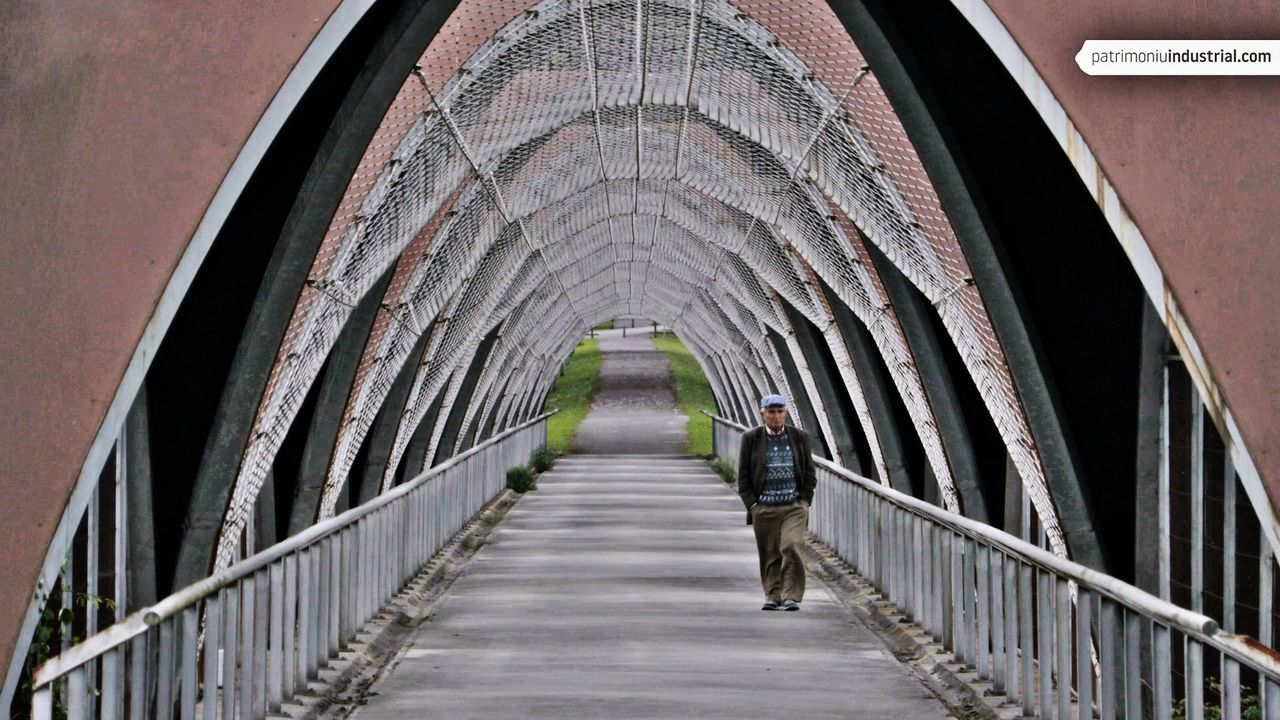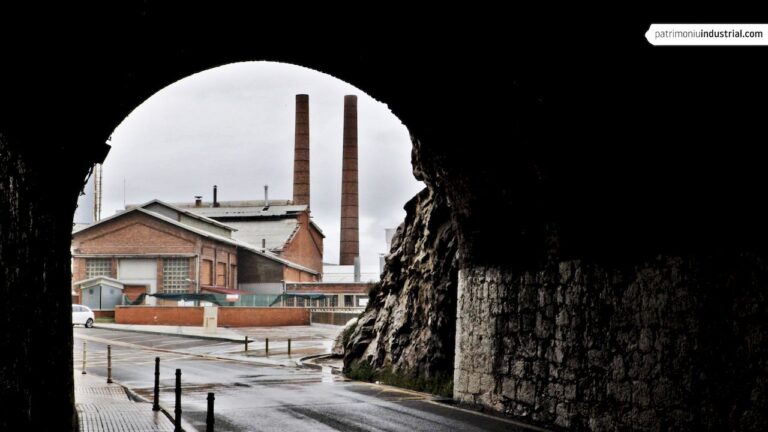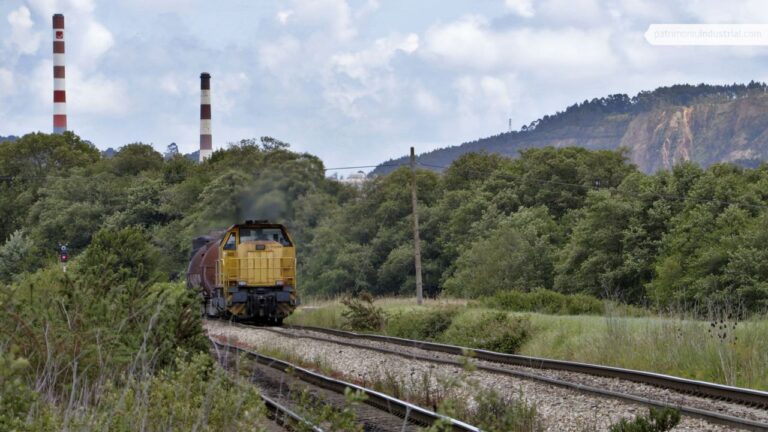Transports
The construction of the first section of the broad gauge line from León to Gijón in Asturian was a major project that linked Gijón's seaport with Pola de Lena. The 62-kilometre route included a large number of masonry works, such as a dozen tunnels and numerous bridges and viaducts. Some of them were made of metal and the rest of stone.
The largest viaduct was in Serín, located in the vicinity of the station that bears the same name and built to cross the gully of the Santianes stream. Its structure consisted of a succession of 11 semicircular arches with a span of 13.4 metres, making a total length of 178.5 metres. It was built in rustic ashlar with a very simple finish, as it has practically no decoration except for some simple imposts at the springer of the arches. Its aesthetic looked like other similar works, such as the viaducts of Las Segadas or Muñón.
It was built for single tracks and it was completed in 1873, a year before the inauguration of the railway. It served for more than a century until it was abandoned in 1979, when the double track was laid between Villabona and Veriña. This was part of the process of implementing the double track from the latter station to Pola de Lena. This work required the construction of a diversion with a new concrete viaduct, located a few metres to the west. The original structure was not demolished, but just abandoned.
In 2010, after many years of abandonment, the Serín viaduct was refurbished as a pedestrian walkway. As part of this project, galvanised steel arches were installed, partially covered by Corten steel segments and closed by a metal mesh structure.
It is a work of great importance and visual strength that constitutes one of the best testimonies of the beginnings of the broad gauge network in Asturias. It has recently been restored by getting a contemporary architectural project integrated.
PHOTO GALLERY






Recent Comments